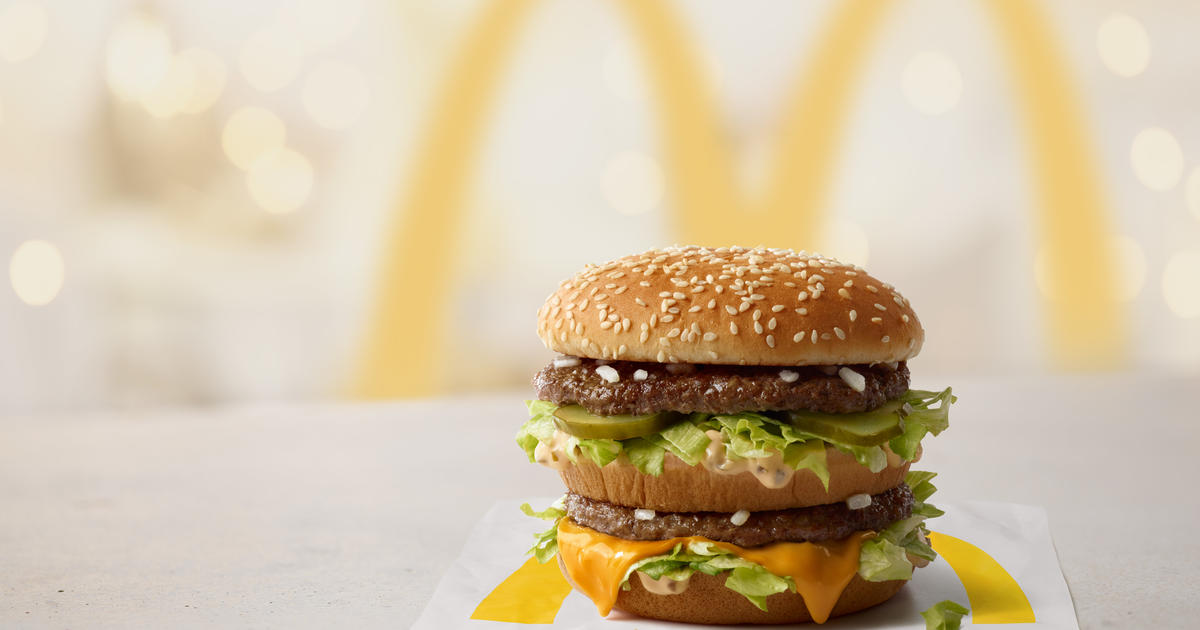Americans projected to up spending over holidays
The harsh inflation that's battered consumers in the pandemic's wake may be subsiding, but that trend isn't yet extending to fast-food chains, which have continued to hike menu prices at a faster clip than inflation overall as well as at the grocery store.
Fast-food became popular because it's both inexpensive and quick, but customers are finding that fast-food meals don't offer the value they once did. Some viral posts on social media have touted McDonald's meals that cost as much as $16, although the truth is that such orders included special burgers that pushed up the price.
While fast-food prices might not be as high as those reports indicate, the Big Mac, Quarter Pounder and other fast-food staples are taking a substantially bigger bite from customer wallets than they used to.
According to data from the Labor Department, inflation overall is cooling, but it is running a different course when it comes to eating out.
Menu prices at restaurants and other foodservice companies climbed 5.4% in October when compared with a year earlier, the numbers from the U.S. Bureau of Labor Statistics show. That's above overall inflation, which stood at 3.2% on an annual basis last month, and more than double the pace of inflation for groceries.
But some of the steepest price hikes occurred at fast-food restaurants, with prices at limited-service restaurants up 6.2% over the past year. Full-service restaurants have hiked their prices 4.3% over the past year.
McDonald's declined to comment, but the burger giant's executives acknowledged its pricier offerings in a late October earnings call.
"Our average pricing level in the U.S. business for the full year will be just over 10%," Ian Borden, the company's CFO stated. Even so, he noted that the size of the increases started to decline in the third quarter.
McDonald's costlier menu has been met with a drop in business from low-income customers, "which we would say is $45,000 and under, [and] was negative from an industry standpoint," McDonald's President and CEO Chris Kempczinski told analysts. "That part of the business, we're seeing traffic in the quarter was down."
But even as customer traffic slipped, the higher prices translated into pricier orders, with McDonald's same-stores sales up 8.1% and the company reporting $6.69 billion revenue for the third quarter.
Big fish tales
Thee viral video showing the $16.10 receipt was for a limited edition "smoky" double Quarter Pounder BLT with fries and a Sprite, with one YouTube video inaccurately calling it a "Big Mac meal."
Still, another image of a Big Mac combo meal that cost $17.59 at a Connecticut rest stop also fueled online outrage.
In fact, the nationwide average cost of a Big Mac this summer came to $5.58, up more than 10% from the $4.89 that a Big Mac cost in December of 2020, a month before President Biden took office, according to an index run by the Economist.
And the average price for a McDonald's Quarter Pounder stood at $5.45 in early October, up 6% from $5.14 a year earlier, according to a cost-of-living index compiled by the Council for Community and Economic Research, or C2ER.
The most expensive Quarter Pounder
The priciest Quarter Pounder was sold by McDonald's for $8.09 in Billings, Montana, which serves as an entrance to Yellowstone National Park and therefore ripe for tourists, the group said. The higher cost of deliveries to a remote area could be a factor in the burger's cost, it added.
Labor costs are part of the equation, and low-wage workers such as those that work in fast-food establishments have seen a rapid growth in pay, substantially eroding wage inequality, notes Josh Bivens, chief economist at the Economic Policy Institute, a left-leaning think tank.
"Consider one metric of inequality — the ratio of the 90th-percentile wage (the wage earned by the worker who has higher pay than 90% of the workforce) to the 10th-percentile wage. Between 1980 and 2019, this ratio rose enormously by about 34%. But a full third of this 39-year increase has been erased in less than three years after 2019," Bivens recently wrote in a blog post.
The 10th-percentile hourly wage was $12.57 in 2022, up 9% during that three-year period, he noted. "If this inequality reduction sticks, it could well be the single most important development in the economy in decades," Bivens said.
- In:
- McDonald's
- Inflation
Kate Gibson is a reporter for CBS MoneyWatch in New York.
Thanks for reading CBS NEWS.
Create your free account or log in
for more features.
